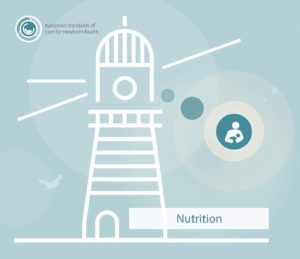A guest article by Dr Margarita Tzaki, Director of the Neonatology Department / NICU at ELENA VENIZELOU hospital in Athens, Greece
The ELENA VENIZELOU hospital in Athens, Greece, was founded in 1935 from a donation for the benefit of mothers and newborn babies. It was designed to provide the best care for them, so practicing rooming-in, based on the model of a maternity hospital in Lausanne, has been the only choice ever since its opening. In 1945, the neonatal intensive care unit (NICU) opened and in 1947, the first human milk bank was established to promote breastfeeding and provide breast milk to preterm babies.

Historical photo (c) ELENA VENIZELOU hospital
Medical literature from the early 1980’s and the tradition in hospital were the driving forces to feed preterm babies, from 1990, with fresh human milk from their mothers or pasteurised donor milk from mothers who had given birth in the hospital and who voluntarily donated their excess milk. Neonatologists and midwives from the neonatal intensive care unit and human milk bank supported women in breastfeeding. Through these years, it has become evident that providing human milk in the NICU is very rewarding for mothers and infants because they tolerate human milk feeding very well, reach full feeding quickly and we rarely see cases of necrotizing enterocolitis (NEC). In a group of extremely preterm babies under 27+0 weeks of gestational age that we studied from 2001 to 2012, among 222 babies with mGA* 25+1 and BW (birth weight) 795+168, the survival rate was 47.5% and the NEC rate was only 2.15%.

Breastfeeding supports the bonding process (c) ELENA VENIZELOU hospital
Although resources are limited in the hospital, through continuous education of health care personnel in the field of breastfeeding, its promotion in the well-baby nursery (a Baby-Friendly Hospital (BFH) since 2011) and in the NICU make a difference in the bonding process and in the early and long-term outcome. From 2015, doctors and nurses were educated in family-centred developmental care and from 2016, we implemented the FINE (Family and Infant Neurodevelopmental Education) programme in our practice in the NICU. This new approach resulted in happy babies and parents. It was really impressive to see that, after the implementation of practices that increase the contact with the parents, like Kangaroo care, extremely and low birth weight infants latched on to the nipple and were breastfed from 30-31 weeks corrected age. They were also discharged home at 36 weeks corrected age when parents knew their babies cues and were ready to take them home.
We really need a change in attitude, education and only very limited resources to promote breastfeeding in the NICU and to improve early and long term outcomes of the “graduates” of our intensive care units as well as the well-being of their families.
*mGA: mean value of birth weight according to the reference

View more (website HELENA VENIZELOU hospital)
Special thanks
Dr Margarita Tzaki
Director, Neonatology Department / NICU
ELENA VENIZELOU hospital in Athens, Greece

